September 01, 2023 by BECKY ROBERTSON
Seven Core Values That Guide GEN

*Click on the PDF icon to view this article in full
GEN’s Central Commitment
The Global Ethnodoxology Network (GEN) seeks to remain faithful to a biblical vision of the future by encouraging communities of Jesus followers in every culture to engage with God and the world through their own artistic expressions. GEN offers networking, training, and resources to support the growing movement furthering these goals. Sound theology undergirds each of the values summarized in this document.
Value #1: Christian Worship
GEN celebrates the stunning variety of Christian worship patterns in the global Church.
Ethnodoxology’s central focus is worship. Worship is the act of adoring and praising God, ascribing worth to Father|Son|Spirit as the one who deserves homage, allegiance, and faithful service. From individual to corporate devotion, worship denotes a lifestyle of being in love with God. The global Church exhibits an astounding array of worship patterns, demonstrating the enormity of God’s creativity and the diversity of the Body of Christ.
Grateful
JO-ANN RICHARDS GOFFE is a Jamaican Christian Cultural Advocate and member of GEN since 2003. Speaker, Author, and Singer/ Songwriter, she is Founding Director of CREW 40:4, a Jamaican based non-profit focused on culturally relevant expressions of worship.
I remember that 1996 July/August Mission Frontiers issue like it was yesterday. When I read Tom Avery and Jack Popje’s articles, light bulbs went off in my head. I immediately said to myself: “That’s what I want to do!” I had already accepted God’s invitation to join Him in global mission, but I had no idea specifically what my role was until I read those two articles.
Who knew that both writers would become my dear friends and supporters? When my home church commissioned me to serve with Wycliffe in Burkina Faso in 2002, Jack was Wycliffe Caribbean Director and spoke at my commissioning service, and Tom Avery, then-SIL Ethnomusicology Director, would become my mentor. That was more than twenty years ago!
Music is my passion, and worship music comes with lyrics. So, my field assignment, first in West Africa, and then in the Americas, was to work alongside translators, helping church musicians to write Scripture-based songs that incorporated both their own languages and music genres.
It wasn’t until I returned to Jamaica two years later that I realized I was equipping others to do what my own Jamaican people needed—to create church songs in our own language and music. Yes, we could always adjust the music to make it ours, but the language itself was an issue. Its associated stigma caused many to reject it completely, especially in the holy worship space.
My own Jamaican mother raised us to speak English only, and we were good obedient children. She even went as far as to fine us (yes, she charged us money) for speaking anything but “the Queen’s English”! I fell in love with the Jamaican language, Patwa, but for me, practically, I couldn’t get it to fit in with the worship experience.
But God had a plan. The Bible Society of the West Indies was working on translating the New Testament into Patwa. As I waited for my new assignment, I ministered in Jamaica using Patwa Scripture portions. The responses were powerful! My own mother got to see for herself how important, necessary, and powerful it is to receive the Scriptures in your own heart language, and through songs, too!
When my mother passed away in November 2021, she was reading through the Jamaican New Testament for the third time. She used it for devotions with her caregivers, and while she had the strength, she danced to the rhythms of the songs I had since produced: “Laad Yu Gud! [Lord You Are Good!]” and “Notn no De We Gad Kyaahn Du! [Nothing is Impossible with God!].”
The progress seems slow and sometimes discouraging, but more and more Jamaican worshippers are being set free to express their worship to God in Jamaican language and musical genres. Kom Mek Wi Worship!
Multicultural Worship
JOY KIM studied piano, church music, and music education before graduating from Dallas International University with a Master’s degree in World Arts. She currently works as an ethnodoxologist in Clarkston, Georgia, with Proskuneo Ministries. Joy works with diaspora artists from diverse backgrounds to engage in global mission through building multicultural worshiping communities.
“We’re all so different. We come from all these places and backgrounds. But nevertheless, we worship. It’s all in the nevertheless.”
What makes the worship in the multicultural Proskuneo community of Clarkston, Georgia, somehow richer? The diversity in their gathering, language, culture, generation, and religious background traditions, demands a higher and deeper sense of community of those present. When people bring all that they are into the worship space, give themselves to each other and to God, and feel safe to bring themselves, they can fully contribute, listen, receive, and create together. They share leadership and like to imagine what is possible with the wealth of perspective, language, and skill in their group.
The group started with two families gathering for potluck and worship together. From there, it grew organically until they asked themselves, “Is this worship? Are we a church?” They hadn’t intended to plant a church, but their relationships, shared context, and their response to each other birthed something special.
People might attribute this specialness to their refugee and immigrant context, but, more aptly, they are a third-culture space created by the interplay of different cultural influences. Proskuneo Ministries attracts bicultural people of all kinds, sympathetic to a life of moving around, who appreciate and navigate diversity in their lives, by choice or necessity. They share a sense of uprootedness, but that’s not “it” either. They are greater than the sum of their parts.
Most people prefer to worship within a shared language and culture, not with “others.” But this community leaned into each other because they had to. Their differences afforded them no presumptive common ground, except their desire to be together. “As we brought together the new ingredients, the process became ours and we felt we belonged to it,” Joy said. It’s unique, and each week’s service brings something new: a song they learn, a new language, nuance, or perspective on Scripture. Middle Eastern members highlight rich cultural connections in Scriptures too. Syrian and Ethiopian members bring their ancient church history. It’s their special embodiment of unity in diversity.
In each culture and language, God has imprinted His image. There’s just so much to learn about God. Art is kind of like breathing in and out—so integrated that they don’t even know who created what sometimes. “Whose song is it?” Joy asks. “It’s just ours.”
God is community in and of Himself. We must worship Him from all of ourselves. Joy is bilingual, so she can worship well in one of her languages, but rarely both at once. Joy’s community doesn’t simply sing a YouTube song in that language, but deeply looks at who is in their midst, and what is meaningful to them. This multicultural group brings more of themselves because they are both welcome and willing to.
Value #2: Potent Arts
GEN recognizes arts as indispensable to human thriving.
The arts are integral to personal and individual expression, and in initiating, transmitting, and reinforcing interpersonal and group communication. They permeate communities, marking messages as important, embedded in, and separate from everyday activities, drawing not only on cognitive, but also experiential, bodily, multimodal, and emotional ways of knowing. Arts instill solidarity, reinforce identity, and serve as a memory aid. They inspire people to action, provide socially acceptable frameworks for expressing difficult or new ideas, and open spaces for people to imagine and dream.
The Power of Arts in Mission
DAVID OLUSEYI IGE is a worship leader and a cross-cultural missionary. He is deeply committed to seeing nations worship the Lord in their unique and indigenous ways. He is an Arts Advocate and coordinates the Worship from the Nations initiative, a project of Declare Global Outreach Mission that seeks to produce 1,000 indigenous songs, 300 music videos, and 100 evangelistic films for 100 unreached people groups in the Sahel of West Africa. He has a Master’s in World Arts from Dallas International University.
On a bright, sunny, Sahel day, four university students came to visit John1 while the newly produced Fula song played from his phone. Intrigued, they were surprised to hear this story song. “Where did you find this? This is our song.” They asked more about this prodigal son mentioned in the song, and he invited them to learn more such stories from the Bible. Eventually, they became followers of Jesus and are baptized disciples today.
The arts powerfully and effectively communicate and transform. Particularly, music plays a significant role in various societies, from soothing lullabies to mournful dirges. In oral contexts in Sahel countries, I have seen that music conveys the truth of God’s Word in a non-threatening manner.
The arts connect people and foster understanding and acceptance. New missionaries of the past often downplayed or avoided artistic genres, or worse, condemned them as ungodly. Through these very arts, though, many oral-preference learners in the world now have received the Gospel, especially through technological advancement and accessibility.
Yoruba people believe that when words fail to communicate complex ideas or emotions, proverbs can step in to bridge the gap. Arts catalyze social change through their ability to challenge practices, provoking thought and inspiring action. Yoruba kings are addressed as Kabiyesi, or, “Who dare ask or challenge you?” But the poet may send coded messages to challenge the king or send an unpleasant message indirectly by means of socially acceptable artistic frameworks for expressing difficult or new ideas beyond mere words. Nathan’s parable so challenged King David in the Bible.
Additionally, arts serve as memory aids, reinforcing identity and helping people remember the message, as God commanded Moses to do in teaching a song to the Israelites, ensuring the message would be remembered by future generations. Arts also preserve cultural heritage and celebrate the unique identity of different people groups. Many countries have policies favoring the broadcast of local productions on national media platforms, including Christian content in local genres. This not only promotes the national culture and heritage but also provides an opportunity to share the Gospel. When the communication medium aptly fits a people, that people perceive the message as their own, and a significant hurdle in sharing the Gospel is overcome.
Visual Art and Spiritual Formation
SUJATHA BALASUNDARAM engages people with Scripture and in prayer using visual art, especially line drawing heavily influenced by folk and tribal art from India.
As a child in Indian school, Sujatha struggled with memorization. A friend encouraged her to draw her response and describe her drawing, and it worked! So, she drew all her subjects: History, Chemistry, Physics, Biology— everything. Soon, she drew to study Scripture and pray too. Ever since, she has encountered God through drawing.
Sometimes Sujatha starts drawing with no plan. When drawing “Tree”, she started with just the tree trunk on folded paper before she saw the impression on the other side and began to trace it carefully, in stillness. As she worked, she remembered Psalm 46:10: “Be still and know that I am God.” The free process taught her that reflecting God’s image requires stillness. Another improvised drawing “Eyes” brought to life Proverbs 15:3, “The eyes of the Lord, are everywhere, keeping watch on the wicked and the good.”
As a new mother, she’d grab a few minutes as she could between feedings and naps to connect with God by continuing a drawing on a napkin or scratch paper, each time picking up where she left off. As the children grew, she would put crayons and paper in front of them as she read to them. By the colors and shapes they drew, Sujatha realized they were processing what they heard. As they grew, she’d ask them about their drawings and saw familiar connections at work in them. Sujatha pondered her children’s drawings as an opportunity to sit with the Holy Spirit and sink deeply in those Scriptures. “We shouldn’t take that lightly. The power of art is very compelling,” she said.
She shared her drawings with other kids and parents. When others urged her to share them online, too, her online following surprised her. Some of the motifs Sujatha used resonated with a lady from Iran and when she asked what it meant, Sujatha was able to give a reason for her faith. In addition to aiding processing, Sujatha found art to be a powerful conversation starter, especially for spiritual themes.
Sujatha posts her works and devotional thoughts online in webinars. During COVID, a group formed a collaborative devotional in which they would begin some art on a name of God and then pass it around the group for each person to develop, discussing it each time. They learned from each other as they drew. The group created seven Advent devotionals with requests for more. Other contemplative Lenten devotionals are available for download at Artresponses.com.
During COVID, Sujatha developed a coloring activity based on some cognitive behavioral therapy exercises—processing what we’re in control of, and what we’re not—which helped several schoolteachers navigating mandatory online teaching. People seek ways to relax, and Sujatha says that increasing that space in God’s presence is our privilege.
In spaces where people are displaced or struggling, Sujatha hopes to see art direct those struggles to God. She works through various churches and ministries, keeping discipleship as the priority, and art as the means. We don’t learn from our experiences as much as we learn from reflecting on those experiences. Art enhances that reflection.
Finding Beauty in Local Fashion and Visual Art
YOUNHEE DEBORAH KIM is an art advocate and ethnodoxologist. She has worked in African countries since 2009 and in some European countries recently. Also, she is a director of Arts in Mission Korea, which is a mission organization that mobilizes and trains Korean Christians to use their artistic talents for God’s kingdom and cross-cultural missions. She joined Inspiro Arts Alliance in 2021 and is working as a short-term project manager.
The first time Younhee helped with a song workshop in Africa, she saw firsthand the power of local, authentic language and art to connect people to God and Scripture. After a few days of composing songs in the regional language, participants switched to their local language and music style which created a night-and-day difference. Authentic praise simply flowed. Since then, Younhee wanted to see that extend into the realm of her own fields, visual arts and fashion, especially in places like Africa with such vibrant and colorful fabrics.
The creative process happens differently at the level of local culture. Younhee led a visual arts workshop among women in Africa using fabric local to their rural setting. As they discussed the role of creativity in everyday life, the women struggled with the concept to perform their task of creating something with their local fabric, especially when it seemed to them quite ordinary. They thought of art as something that required a snazzier pattern like those in city fabrics of other people groups.
Younhee kept encouraging them, though. She asked, “What can you make with this fabric, apart from clothing?” The women began to think up various souvenirs, jewelry, bags, or hairbands to make. As they began to work with their own fabric, they discovered something important: beauty exists in what was theirs, too. When they discussed art—music and dance and fashion—they hadn’t considered that their own singing, dancing, and fabric could also be beautiful. That’s the power of art and creativity.
A 2012 arts camp in Benin featured a painting art camp for children and a fashion program for adults, mostly Beninoise young ladies, which culminated in a runway experience in which the women modeled their creations with their own bodies. They dressed in their own creations from head to toe, proudly presenting their art with newfound confidence and pride in their local designs as beautiful. In the future, Younhee hopes to help women to create small businesses with their fashion designs.
At a different workshop, regional Sunday school teachers in Tanzania studied Scripture in the mornings to create teaching songs, paintings, drawings, and fabric art, and taught them to children in the afternoon. Through teaching with their art, they discovered the high value that exists in arts of all kinds, not only music, and that the creative process brings life to learning, teaching, and engaging with Scripture.
Value #3: Historical Awareness
GEN situates its goals and activities within global, regional, and local histories and in their sociocultural dynamics.
We recognize the complex and constantly changing nature of every individual’s and community’s artistry and worship practices, including our own. Because Euro-American art forms have largely accompanied the spread of Christianity in recent centuries, local artistic traditions—especially those of ethnolinguistic minorities—often remain outside the church. Ethnodoxology seeks to redress this imbalance by retaining a robust engagement with representatives of local, older, often rural artistic histories. We also celebrate urban multicultural, multiartistic identities and creativity that mark more and more Christian communities, developing resources to help them craft unique worship practices.
Embracing Local Arts in India
DR. JACOB JOSEPH served 23 years at New Theological College in Dehradun and started the first university accredited indigenous church music program in North India. Presently he serves as the Dean of the School of Worship and Music at South Asia Institute of Advanced Christian Studies (SAIACS) in Bangalore. He is married and has four boys.
Vestiges of foreign missionary work remain in Jacob Joseph’s native South Indian church: benches, shoes inside, a Western organ, and translated Western hymns. The hymnbook does include locally written songs, albeit sung in hymn-style, but mostly the translated hymns are sung. The music, though dear to those who sing it, remains foreign. The church simply has not budged on its music, which is so culturally ill-fitting that secular comedy programs even ridicule the Western music and language of the church.
Jacob studied Western music abroad to train church leaders in India. His direction abruptly changed, however, after attending GCoMM where Chris Hale led worship in Hindustani styles. Jacob found himself completely wrapped up in worship, and he caught the vision for Indian worship. His study focus changed to indigenous music which he set out to implement back in India.
Jacob went to work planning a worship service at his college with Indian music and poetry to worship the Trinity with local dance and preaching style. The tambura drone opened the service, and some of Chris Hale’s songs followed. People began walking out, even from the front row! Dozens more exited during the dance, and by the end, only fifty people remained of four hundred. Students shouted, “devil!” and pushed on Jacob’s chest, calling shame on him in an uproar. The next day, classes were cancelled amid student protests demanding Jacob’s dismissal. Finally, the college founder and principal gathered the students to preach a long sermon on biblical foundations for local music, offer public support for Jacob and for more indigenous worship.
People calmed down, but the tides had not yet turned. Jacob recognized the bondage of colonialization that continued in his tradition when the most standard Christian songs put to Indian dance suddenly turned “devilish.” Throughout that year, Jacob incorporated indigenous worship into his Theology of Worship course and preached on the topic at every opportunity. He also invited ethnodoxologist Ian Collinge, whom he’d met at GCoMM, to India to present an academic paper and teach a course for the student community.
The next year, Independence Day fell on a Sunday, and a friend urged Jacob to try again with another Indian service. So, this time, worshipers removed their shoes before entering the chapel. Mats covered the floor instead of chairs, and marble chips outlined each state in a large map of India in the center. The service opened when a three-headed lamp was lit, symbolizing the Trinity. A newly composed folk song in a local dance style followed, and a student from every state of India that was represented in the community came forward, lit a diya (small clay lamp) from the three-headed lamp, and placed it on their state. The group sang “God is so good” in those twenty-eight languages in local musical styles and prayed together over specific requests from every state. No one walked out this time, and people even stayed afterward, weeping in prayer for their state around the map.
Since that remarkable day, Indian music is part of the curriculum and chapel service, and the college even offers sitar training for use in worship. As they go out to minister in unreached areas, they look for ways to incorporate local arts into their work.
“It doesn’t happen overnight,” Jacob said. “I’m not blaming the missionaries,” he insists, noting the immense work of love the songbook compilation and Bible translations displayed. It is time for the Indian church to take initiative to make church more Indian. New cross-cultural work attests that local worship is essential.
Indigenous Revitalization in Philippines
ROCE ANOG MADINGER serves with her husband at the Institutes for Orality Strategies. She also volunteers part-time for SIL Philippines as an Ethnoarts Specialist.
Among the indigenous groups in the Philippines that Roce has supported in ethnoarts, one Matigsalug story stands out. The story was six to eight years in the making, beginning with the work of the Holy Spirit through Tano, an encouraging mother tongue Scripture translator who was convinced of arts’ power to move people’s hearts. He invited Roce to conduct a workshop with her outsider voice, which can be heard differently.
The community went through quite a transformation. After an initial ethnoarts workshop, the church invited Roce back three times over the years for further workshops. The community worships using their attire, dances, instruments, and their own language. “We encourage and celebrate this. We affirm this. We want to provide spaces where communities can freely worship God using expressions that are closest to their hearts,” said Roce. They began to use their own arts and language more and learned to appreciate the role of culture in understanding and sharing the Gospel.
Their worship now vibrantly displays colorful indigenous dress, enthusiastic traditional movements, and the blended sounds of traditional songs in local language with modern instruments. From child to grandparent, the church connects to God, one another, and their indigenous identity across generations. This transformed church now reaches other indigenous communities with fewer language and cultural barriers to cross.
More than that, their creativity and innovation keep spinning. They sound both modern and traditional, integrating old and new together so members can connect to the worship honoring both past and future. They also feel free to adapt reggae music with their own twists of local language and movements.
Roce saw how elder Nanay (mother) Adelina modeled and taught the ulahing, a traditional spontaneous art-song for use in prayer. The young people didn’t know how to do it, but she patiently taught and guided them. The youth tried it out bravely, mistakes and all, laughing together, and rejoicing when they got it right.
One visiting urban pastor who witnessed the lively dancing and singing in worship said he wanted to bring his entire leadership team to come be inspired by the community. In his church, men usually don’t dance, but Romans 12:1–2 beseeches us not only to transform our minds, but also to present our bodies in living sacrifice. Roce felt invigorated to dance in worship in her own church back home after visiting this church and seeing their example. The urban church could learn so much from this group’s knack for crossing generational boundaries and creatively giving room for innovations. “We need more of this in the urban setting as well.
There’s so much freedom!”
Value #4: Human Agency
GEN respects the right and capacity of every individual and all communities to shape their own artistic realities.
Artistic products are made, appreciated, and given value by people. We endeavor to encourage the diversity of human artistic ingenuity locally and wheresoever these arts are exported. We acknowledge, honor, celebrate, and value the unique artistic creations and contributions of individuals and communities. Therefore we cultivate these gifts both in our own communities and in those we endeavor to encourage and collaborate with so that they can continue to explore their unique identities and giftings—the dynamic arts that are the heart of the people as individuals and in community.
Local Language Scripture Stories and Songs
VENI SETIAWATI
Veni Setiawati tells her ethnoarts story from Toraja, south Suluwesi in Indonesia. After Veni’s church hosted a Multi-Lingual Education project for children in partnership with a university, a Christian organization, and local government, the positive effects had the church asking for more Sunday school curriculum in the local language. The drastic change was evident in the children’s faces when they heard Bible stories in their own Toraja language as they listened enthusiastically and engaged with the lessons. As a result, the adults also began to engage with Scripture stories in their own language.
Later, the church invited an ethnoarts specialist to come train them and made a commitment to create songs not only for the adults but for the children too. After creating more than 70 songs and stories, they arranged to have a jamboree festival. Over 3,000 Toraja children came from all over Indonesia. A full Bible translation had been completed and accessible for 80 years in the regional language, but it was too difficult for Toraja children to engage with it. The Bible stories when told in the Toraja language were easier for the children to understand.
Local excitement from the jamboree paved the way for a Toraja Bible translation, and now they have completed Luke. Church leaders anxiously await an audio version of Luke as well and want local Toraja church schools to read the Scriptures daily in school. SIL arts specialists are working with the community to continue arts trainings.
Authentic Heart Music
ELSEN PORTUGAL
Elsen notes that life and art flow from historical interaction between cultures. In north-central Brazil, outside Brazilian missionaries have lived for over 60 years among the Xerente indigenous people preaching the Gospel, loving the community, and even acting to protect them from demise. The Xerente loved their friends and welcomed them and their strange cultural sights, sounds, and ways, mixing them with their own. But eventually, instruments and song styles—both Christian and secular—derived from inside, outside, and wider regional cultures blended, creating a contemporary Xerente reality. By 2010, Xerente music style settled into a fusion of all these influences. Christians among them worship authentically from these artistic places, although, to outsiders, the fusion likely sounds as if they were simply trying to imitate regional genres.
Enter the purist ethnomusicologists, trying to reverse colonialist history, advocating for indigenous worship with a passion as blind as the predecessors they criticize but now from the opposite angle. It’s tempting to criticize the intention of historical predecessors in mission, but two centuries back, people held a different perspective, and like us, were a product of their time. We experience intercultural richness they never knew and have learned things they didn’t know: that there is beauty in every culture, and culture is always in flux.
As Elsen studied this process, he delineated four signpost questions surrounding meaning, function, competency, and agency that help assess whether music, regardless of its origin, truly reflects local identity, or, in other words, is authentically theirs. Does the artistic form connect with real meaning to the community and its individuals? Does it fill a role in the community? Does the community have sufficient competent individuals to create, perform, and sustain the form? Does the community have the voice and ability to administer the form without external imposition?
A soundtrack of Xerente life truly includes fusions of the cultural influences that touch and shape it. The Xerente themselves name what is their music, which songs touch their hearts and resonate with their identity. Brazil is all about fusions like samba and bossa nova which arose from experimentation in sound and style mixes which stuck. That’s the story of artistic development around the world, and the increase in cultural movement and technological advance have amplified even more the diversity of sounds and fusions.
The Xerente respected the missionaries who had very much become a part of their community, but who also chose not to wield undue influence over artistic decisions that firmly belong to the Xerente. As Elsen researched the Xerente music world as an outsider, he acknowledged expectations that he would return having helped them create indigenous worship music. While his visits did indeed provide them with a biblical foundation for using arts and affirmed the value of their arts, he discovered that the creation of authentic indigenous music was already happening as they asserted their own agency to name what music was theirs.
This process beautifully exemplifies what can happen naturally as a community employs their own agency. Outsiders do well to encourage people toward something new and perhaps closer to the core of a community’s authentic self-understanding, but it is the community’s privilege and responsibility to name who they are and what parts of the many surrounding influences authentically reflects their reality.
Human Agency in Brazil
HÉBER NEGRÃO is the anthropology and ethnoarts coordinator at the Evangelical Missionary Linguistic Association (Wycliffe in Brazil) and he is a board member of the Global Ethnodoxology Network. He has been involved in ethnoarts ministry in Brazil for 16 years. Currently he is pursuing his PhD in world arts at Dallas International University. His passion is to see every people praising God using their own arts in a culturally appropriate way. He is married to Sophia, and they have two children.
In my years of ministry with ethnoarts, I have witnessed various forms of human agency. For example, the Bible translation team for the Paypa people in central Brazil had recently finished translating the Gospel of Luke. They wanted portions of it in an artform to engage the people with the recent work. To help them achieve that goal, I conducted a series of conversations using participatory activities that would facilitate detailed reflection on this project.
The team decided to create a video of the parable of the two builders (Luke 6:46–49) with contextualized visual art. They illustrated a good and a bad house following the cultural construction techniques. After that, we created a short video with those drawings, narrated in Paypa. In the process, the team also devised other goals for that artwork; they wanted to encourage people to trust God. Finally, they planned to create videos with different stories from Luke to share in villages throughout the region.
During a song-writing workshop for the Xerente people in central Brazil, Elsen Portugal and I noticed that the church leaders were hesitant to use the zâ (rattle) because of its traditional association with shaman healing rituals. After conversations and Bible studies, the church leaders decided to dedicate the zâ in prayer for use only in worship to God and subsequently even took it to other villages to use confidently in worship.
Sometimes, however, people decide to go in a different direction than we expect. Our role as arts facilitators is to point the way of cultural validation, like a flashlight that illuminates the way at night, showing what’s ahead. We cannot force people to go in a direction they do not want to go. When this happens, we must “respect the right and capacity of every individual and all communities to shape their own artistic realities,”2 as GEN value #4 states.
After walking a group of indigenous leaders in Brazil through a week-long course, “Indigenous Music to the Indigenous Church,” I encouraged them to compose new songs based on their newly translated Bible portions. I planned to record the new compositions so they could take them back to their villages. They hesitated, so I asked what they wanted to do. They preferred to record the existing Western songs of their translated hymnals. So, that was what we did.
In contrast, I conducted the same course in East Timor to a completely different outcome. The 25 seminar participants were from seven of the small country’s widely diverse language groups. After quick research on local song styles, they composed songs based on the same context as the songs they chose. The result was seven beautiful and impactful new songs in their language.
Value #5: Locally-Grounded Methods
GEN favors methods that amplify local agency and creativity.
We encourage the development of a wide variety of arts in the life and worship of the church, acknowledging the importance of local decision-making in the choice of art forms. Given our emphasis on individual and community agency, we choose participatory methods like appreciative inquiry in ethnographic research and sparking creativity. We esteem local categories and practices of artistry as primary, rooting our analyses in the practitioners’ worldview. This affirms the communicative, motivational, identity-strengthening power of locally-created expressive arts. In short, we embrace a “Find it—Encourage it” model of arts engagement rather than a “Bring it—Teach it” model.
Scriptural Bridges in Local Histories
JHONNY A. NEITO OSSA is director of ALDEA, Asociacion Latinoamericana de Etno-artes.
I directed a group of Field Methods and Research students into the Yanesha community of Peru. Through fielding questions about their artistic genres, community representatives analyzed their own forms and discovered how unconsciously they had been praising God in life and church. Art was everywhere, even in the lines of their suits and the color of men’s and women’s clothing. Even the local materials and the way their clothing was made reaffirmed their identity as a people, and itself directed others constantly to praise God.
We were amazed at all we had learned as outsiders, but the Yanesha also reveled in remembering their roots. A villager told us how the ancient Yaneshas had worshiped a true God but eventually followed others in worshiping the sun god Inti. Once, the community travelled west to meet the sun. They walked for days down the Andes mountains to the Peruvian coast just to see the sun set beyond Pacific Ocean horizon. They concluded that Inti would always be beyond their reach, whereas the true God of their previous worship had always been present among them, day and night. By remembering their stories and through critical reflection, they affirmed their identity as a people and recognized the power of their local arts to redirect their worship to the true God. Peruvian Yanesha worship Him still.
God is also present in the mythology of another group, the Amazonian Ticuna. Biblical typologies abound within local histories, like a Cain/Abel pair of brothers named Yoi and Ipi, and the huito, the sacred fruit of a tree of good and evil. Jesus’ call to be fishers of men connects to the story of a god who took fish from the Amazon to become men who inhabited the jungle like the first Ticunas. An eternal city with no pain or suffering also exists beneath the Amazon. Sound familiar? Myths I grew up hearing resonate with those I hear in every community I visit. This connection allows me to dialogue with the Ticuna as they examine their worldview and practices and their relationship to their celebrations at festivals, transition rites, and the daily art that characterizes everything they do.
Deep acknowledgement of Jehovah as the eternal God and Creator of the universe requires deep conversations over time. Here, the beauty of ethnodoxology enters as a discipline which allows us to get to the roots to appreciate the cultural wealth of Amazonian peoples. Discovering how God was already present in this community and how He has been working until now has not only reaffirmed their cultural identity with models of worship typical to the jungle. It has also opened a dialogue to construct local theology from ethnographic, theological, artistic, and missiological study, because within its legends lies even a typology of the Great Commission. The disciple Nathanael wondered what good could come out of Nazareth. The Ticunas should not have to ask, “Can anything good come out of the Jungle?” Like Jesus’ response to Nathanael, surely God can say to the Ticunas, “When you were under the huito tree, I saw you.”
Inclusive Creativity in Worship
NINOSHKA GELPI SALAS is a special ed teacher with a specialization in Autism and dance and body movement. She finished her master’s studies at Alliance University (Nyack, NY). Together with her husband, Jhonny A. Nieto Ossa, they run ALDEA (Latin American Association of Ethnoarts)
As a special education teacher, I always look for new and creative ways for my students to develop life skills. Art plays a crucial role in meeting their need. How can these children with special needs come to know the Gospel and choose to follow Christ as Lord and Savior? And how will they praise Him? How can they be included in the life and worship of the Church? My task is to help local churches to consider realities through conversations, talks, or workshops that allow the whole Body of Christ to worship in community, including special populations.
When I teach the Creating Local Arts Together (CLAT) method in the GEN course “Arts for a Better Future,” I share from my experience as a special education teacher to encourage participants to consider creatively how to engage not only the indigenous ethnic groups but all peoples who do not know God. In this way our students are more open to apply CLAT in community development.
What will it take to reach a people? It will take serious investigative work in ethnographic research and creativity in Bible translation, literacy, multicultural worship, church planting, and discipleship. Encouraging creative thinking is the largest part of my joint ministry with my husband as we teach in Bible translation schools in Argentina, Peru, and Paraguay, in churches in El Salvador, Colombia, and Puerto Rico, and in theological seminaries.
As mobilizers we teach the importance of communicating the Gospel in culturally relevant ways. In our Introduction to Missions course, we encourage students to learn from the mistakes of the past which underestimated local art practices in worship. In local worldviews, the communicative, motivating, and strengthening power of expressive arts, created locally, affirms that local identity.
In this way, as an ethnodoxologist, by combining my profession and my passion for art, I fulfill the purpose of praising God, and inspire others to praise Him by finding their identity in Him and creating from their own local experience for the glory of God. In other words, “Find it and Encourage it!”
Value #6: Academic Rigor
GEN carefully integrates insights and methods from the many disciplines that contribute to accomplishing its goals.
We value and develop resources that provide holistic views and positions from a variety of disciplines. Among others, these include performance studies; folkloristics; creativity studies; musicology; orality; anthropologies of arts—music, poetics, choreography, dance, theater, visual arts; along with missiology, worship studies, and other theological disciplines. In our research, writing, and practice we endeavor to maintain high academic standards as well as performances and products that best emulate the creative and representative attributes of the works generated by individuals and communities. Ethnodoxologists need not be professional academics, but they must plan and act informed by rigorous, nuanced, analytical ideas.
Scholarship as Love
ANYA EZHEVSKAYA is a recent graduate of Dallas International University with a PhD in World Arts. She serves as the assistant editor of GEN’s Ethnodoxology journal and as a Wycliffe volunteer while continuing her job as a translator and interpreter for NASA's Johnson Space Center, raising her two teenagers with her husband, and serving as elder at Webster Presbyterian Church. In her free time, she enjoys painting, dancing, climbing trees, camping with her family, eating tasty things, and exploring the world.
Since adolescence, I’ve been trying to combine my faith and my commitment to the life of the mind. This desire took different forms. For example, when I led a Bible study, I dove so deep into the exegesis of the Greek that I lost most members of the group. I went to a large, secular university but majored in Religious Studies. I marveled at God’s revelation in nature by exploring biology and the technical sciences. The list goes on. It all felt somewhat right but also—unsatisfying. When I joined Webster Presbyterian Church (my current church) and the pastor spoke of us Presbyterians “serving God well by using our minds well,” I felt I was on the right path. And when I learned about Dallas International University’s PhD program in World Arts, I felt like I had finally found an ideal combination.
The program brings together thorough training of theory and praxis as it pertains to the exploration of ethnic arts around the world and offers the students ample opportunities to apply gained expertise to the furthering of God’s kingdom on Earth. Humans across the globe use artistic means to relay the deepest elements of their identity and spirit to each other. From the lullabies a mother sings to her child to the ritual dances that send a loved one off when they die, creative means of self-expression bring individuals together across generations. Significantly, people are often best able to connect and relate to their Creator through the artistic media of singing, moving to music, recitation of sacred words, and more. By learning how to learn and understand various artforms from around the world, graduates in this PhD program learn to form connections, build bridges, lift up, encourage, and foreground communities. Graduates, like myself, can also walk alongside community leaders and help them tap into the power of their arts to reach important community goals.
As I went through the PhD program and am now, having completed it, looking for God’s guidance of where to apply my newly gained knowledge, I grow increasingly more confident of this: academic rigor integrated into a grounded faith is a powerful thing. Not only have I been able to use my skills already to do research, publish papers, and speak at conferences, but I have been able to serve as GEN’s Ethnodoxology journal assistant editor. Most importantly, though, I have understood that to learn about a community’s artistic expressions, to talk to individuals, to ask them about their experiences, and to seek to understand the depth of their traditions and cultural wisdom—this is an act of love. This is one way that we show care to each other. Listening and asking questions, leaning into, sitting quietly, reflecting back, and doing so with discipline, scholarly integrity, and commitment to accurate representation—this is scholarship and also, this is love.
Local Arts Training for Pastors in Cameroon and DRC
ROCH NTANKEH, PhD is an assistant professor at the Cameroon Faculty of Evangelical Theology where he teaches missiology and ethnodoxology. He is also an ethnodoxology consultant for several organizations with which he often leads composition workshops in Cameroon and French-speaking Africa.
Music has always fascinated Roch. For decades, he has studied, taught, and composed local African music. As he entered the arena of pastoral training, he worked with Brian Schrag and others in SIL Cameroon to establish ethnomusicology-based principles for application in the local church. Later, these courses integrated more theology to develop into ethnodoxology to supply the training they needed, that fit the reality and context, rather than Western notation courses. Roch also recognized the need in Cameroon to train church leaders to match the local leadership structure. The top of the pyramid has a voice; the bottom doesn’t. So, reaching the person on the top of the pyramid means that you have reached those at the base. Who better to train than future pastors who will go out and lead new churches with fresh ideas?
Roch’s courses led him to PhD studies abroad where he wrote on restoration of local arts, and later, the redemption of local arts. He says, “Just as our lives were changed when we heard the Gospel, so it is with our lives, our identity, and capacity. As we are new creatures now, so should it be with our arts. Gospel encounter offers our arts that same new identity and capacity, and our art then belongs to God—our instruments, our genres, everything.”
After Roch completed his dissertation, he continued teaching, training, and leading composition workshops and using biblical principles to advocate for traditional music in church. He took opportunities to talk with the Faculty of Theology in various institutions in DRC and Cameroon which paved the way to establish five-day intensive courses. Roch wants local Christians to understand that the Bible has nothing against local genres. His courses survey instruments in the Bible, beginning with Psalm 150. In places like Psalm 103:1, “Praise the Lord, my soul, all my inmost being,” the Bible commands our innermost expression of praise to God.
Roch began to translate published resources into French for his pastoral training courses, such as Music in the Life of the African Church3 and some articles from Worship and Mission for the Global Church4 among others. He continues to develop local training material in French. No training existed for Roch as a young church musician to develop his own local arts, only to learn foreign music. He continues to create courses to train both artistic local Christians and church leadership alike. Roch anticipates the day when more robust financial and personnel resources open the way for more widespread and frequent training courses.
Ethnodoxology in Research and Practice
MELANIE HENDERSON Melanie is a musician and arts advocate who has served cross-culturally in Southeast Asia and North America. As a multi-instrumentalist and church worship facilitator, she has served with congregations in Malaysia, Cambodia, and the US.
My journey into the world of ethnodoxology began a few years ago at a weekend workshop, not as an academic pursuit but as training for ministry in a multiethnic society. The two days were designed for local church members and artists. Among other topics, we delved into intercultural and multilingual worship, where ethnodoxologist Ian Collinge shared about his research to help Christian communities who desire to move toward multicultural worship.
Later, as a non-credit participant in the Arts for a Better Future workshop (one of GEN’s trainings), I was introduced to the trailblazing research and ministry of Dr. Brian Schrag. The outworking of this research, Creating Local Arts Together Manual, and its companion Worship and Mission for the Global Church: An Ethnodoxology Handbook (edited by Dr. James Krabill) are practical tools which were informed by academic research and innovative cross-cultural practices. These resources are deeply influenced by the realm of holistic community development work and lessons learned and best practices gleaned from a host of ethnodoxologists.
Now, as a world arts PhD student, I’m learning more about the foundational theories which undergird and help us to be effective as we work among the nations. We look up to scholars in our field, like Dr. Roberta King, Dr. Jean Kidula, Dr. Jay Moon, Dr. Robin Harris, Dr. Brian Schrag, Dr. James Krabill, Dr. Roch Ntankeh, and a host of the movement’s global leaders. Their research and contributions have led to the design and development of many resources and tools for ethnodoxologists, including ways to see and learn more about cross-cultural work and creativity—especially those arts that are unique to a community but unfamiliar to us. I have seen the value of this research for contributing to the restoration and redemption of endangered cultural forms that are part of God’s redemptive analogies and grace within cultures.
I cherish the interest and concern for the whole person and the whole community exhibited by the network of ethnodoxologists and its high value for interdisciplinary academic research and practice. We aim to recognize and explore (among other things) the connections between neuroscience and worship; the arts in worship beyond music; sociological and anthropological aspects of global migration; refugee movements and worship; trauma healing; and peace studies. We worship together, and aim that our academic pursuits also be submitted as acts of worship in our longing to see God’s kingdom here on earth as it is in heaven.
I have seen firsthand the commitment of the network of scholars and practitioners in sharing best practices and new theoretical insights, as we continue to explore the connections between worship and all of life, especially as displayed through culture and the arts. This commitment is evident not only through publications and at academic conferences worldwide, but also as shared worship with local churches and communities, and as mentorship and encouragement of Jesus-worshippers locally and worldwide.
Value #7: Confident Hope
GEN embraces holistic visions of better futures that all communities can work toward.
Ethnodoxologists nurture spaces that are life-enhancing and where people can imagine and plan for better lives. Kinds of ‘better’ include having more justice, health, artistic diversity, love, well-being, creativity, vibrant churches, vital spiritual formation, and awe-inspiring, transformational adoration of God.
Healing and Resilience in Hong Kong
HOILING POON is an Ethnodoxologist and PhD candidate in World Arts who strives to inspire and equip Asian churches and artists to embody and contextualize kingdom values into their worship and ministry. Alongside teaching intercultural studies, she enjoys singing, Chinese calligraphy, and art jamming with her nine-year-old daughter.
Two new training courses recently began in a Hong Kong seminary: Theory and Practice of Ethnodoxology, and Arts in Trauma Healing. Students in both courses discover what God has already given us in our hearts to use for God’s glory.
The Ethnodoxology course happened in a time of uncertainty, which pandemic restrictions exacerbated. Students shared with voices full of emotion how meaningful it was to use their artistic gifts to serve God’s kingdom. Sweet words also evoked grief that the church hadn’t yet accepted such willing and gifted servants, but the time seems to have come for a fresh wind to blow in the church in Hong Kong.
Arts in Trauma Healing also debuted in Hong Kong’s historical moment of economic hardship, social upheaval, pandemic confusion, and protests that jailed many church members and those connected to them. Amid Hong Kong’s shared suffering, the church has an opportunity to connect those suffering to Christ through the Gospel proclamation.
Christian psychologist Diane Langberg5 has suggested that the 21st Century’s next big mission field lies in trauma healing. God has laid on many hearts in Hong Kong a shared desire to do something, as the church, to bring people to experience God in suffering. We’ve long believed God is our healer, yet the church hasn’t been a place where people experience that healing. In a critical time of suffering, God has put this faith in the hearts of many. Christians want to bring people to experience God’s healing.
Arts in Trauma Healing course participants represented community workers from the areas of social work, arts, therapy, ministry, and medicine, all who themselves experienced healing during their training and want to serve the church. They eagerly embraced the notion that God has created us with a healing mechanism. When trauma shuts down logic verbal centers, artistic creativity can unearth pathways to healing. Facilitators walk through this process with co-journeying groups. The first training filled up quickly and a second is already scheduled. Over half of the first participants are now also being trained as facilitators. The need is great, and people are responding. As more people share their local healing stories, we can develop and contextualize the material even more to the Hong Kong setting.
We can be confident with hope in God. God hasn’t given up on Hong Kong, despite the shared difficulties. He is still working here, still calling people to respond to Him. Many in this new field of ethnodoxology have pioneering hearts to prepare the way for others. These courses can help activate people’s God-prepared healing mechanisms with creativity and community, exploring new ways to see God’s hope and healing in a suffering world. So, we can be confident that we can face challenges and suffering in our lives. We are well-equipped. We must discover this gift in our lives. We have confidence to walk with God to face the challenges for which God has prepared us.
Middle Eastern Hospitality and Shalom
JAEWOO KIM is a multi-cultural worship leader and songwriter. He serves in network relations and ministry development at Proskuneo Ministries which aims to bring nations together in worship on earth as it is in heaven. Jaewoo lives in Clarkston, Georgia, where over 60 languages are spoken in a 1.5 mile radius.
I first met Dareen and Chadi at The Proskuneo School of the Arts in Clarkston, Georgia—a school that provides a safe and creative space for the children and youth in our town. Dareen and Chadi were living in Saudi Arabia when the civil war broke out in Syria in 2011. Soon they came to the United States and resettled in Georgia as asylees.
They found our ministry’s small arts school in Clarkston, Georgia, a city known as the most diverse square-mile in the U.S. for its accumulated number of refugees and immigrants resettled during the past 30 years. Here, the presence of many others from diverse backgrounds helped Dareen feel safe enough to serve as a volunteer voice teacher. Here, it was normal to hear heavily accented English. This space allowed and encouraged people to bring their cultural and artistic expressions. No one had to leave their culture at the door.
Then I met Chadi, Dareen’s husband, who was also an excellent musician and worship leader. They started to come to our weekly worship gatherings and soon our community was singing Arabic songs. When they found people in our community were open to learn and receive from them, they were eager to teach us not only songs but dance and other arts too. The more we spent time together, the more I became fascinated by their rich Christian history and tradition from Damascus, Syria. They shared story after story about abundant church life in the Middle East and often demonstrated their radical hospitality by welcoming people into their home with an overflowing feasting table.
We ended up writing many songs together in multiple languages including Arabic. When they read Scripture, pray, and sing in Arabic, they bring much more than just another language: a faith resilient to persecution, radical hospitality toward strangers with the aroma of a never-ending bounty of Mediterranean food.
When we co-write songs together, Dareen and Chadi often say salam, an Arabic word for peace. At first, they came to us as guests needing our safety and hospitality, but at some point, they became our host, serving us with their abundant cultural resources. In an authentic co-creating space, the host becomes the guest, and the guest becomes the host. As reciprocal exchanges occur, often mutual transformation follows.
Jessie Tang, a British-born Chinese ethnodoxologist, says it well: “As God’s people learn from one another, they also partake in one another’s cultural expressions, including singing each other’s songs, to create an organically evolving community, where when one member enters, the whole culture changes.”6 Because Dareen and Chadi became a part of us, now our whole community longs more for salam, and we’ve learned to worship the Prince of Peace with them.
Memorial Art
LYDIA HRENIUC’s parents immigrated to the United States less than a decade before the revolution in Romania. She grew up with many stories from that time. Lydia is currently a PhD in World Arts student at Dallas International University and an adjunct professor in California Baptist University’s architecture program. She also serves with SIL International and is a GEN member.





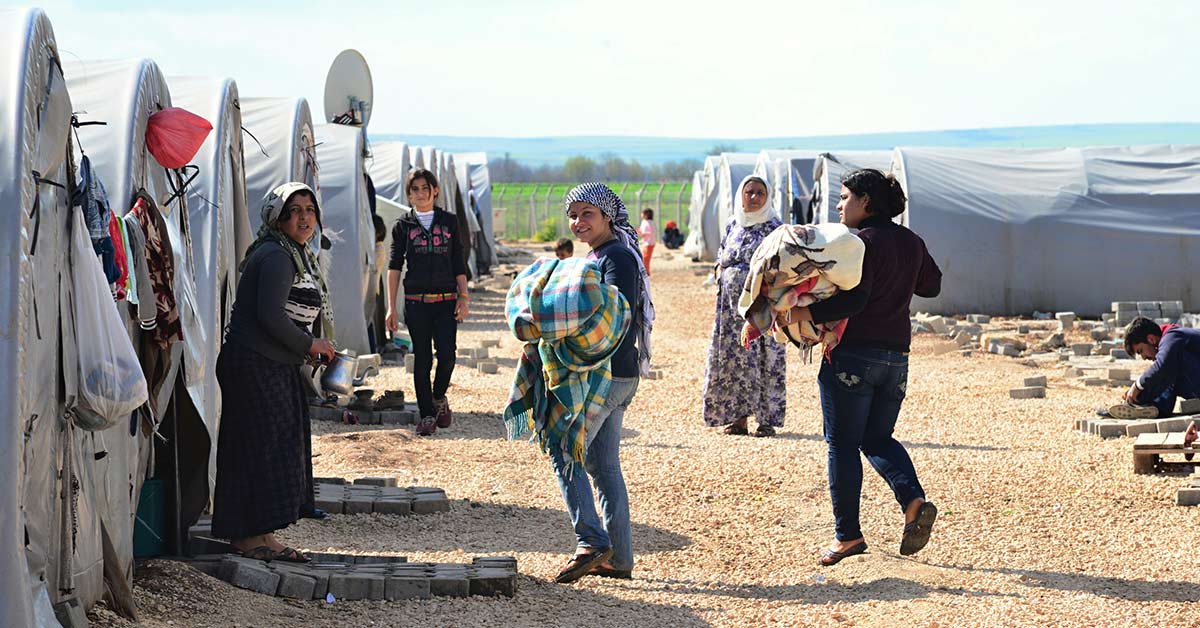
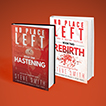



















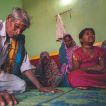


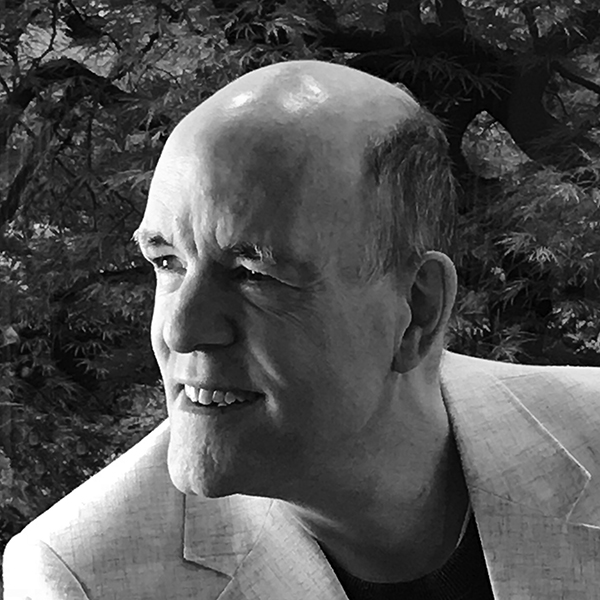



















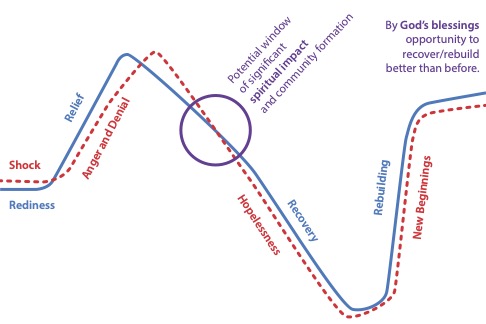






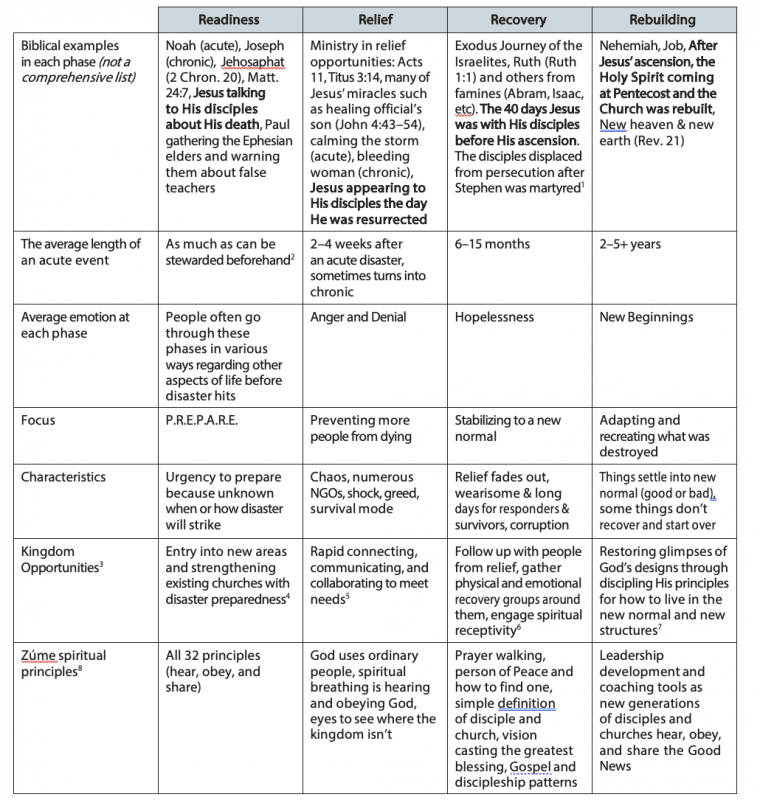
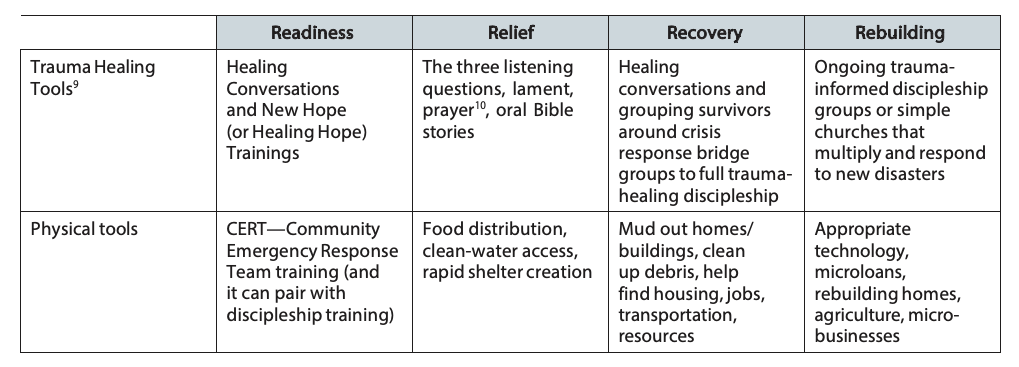
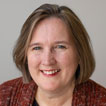

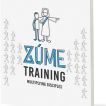
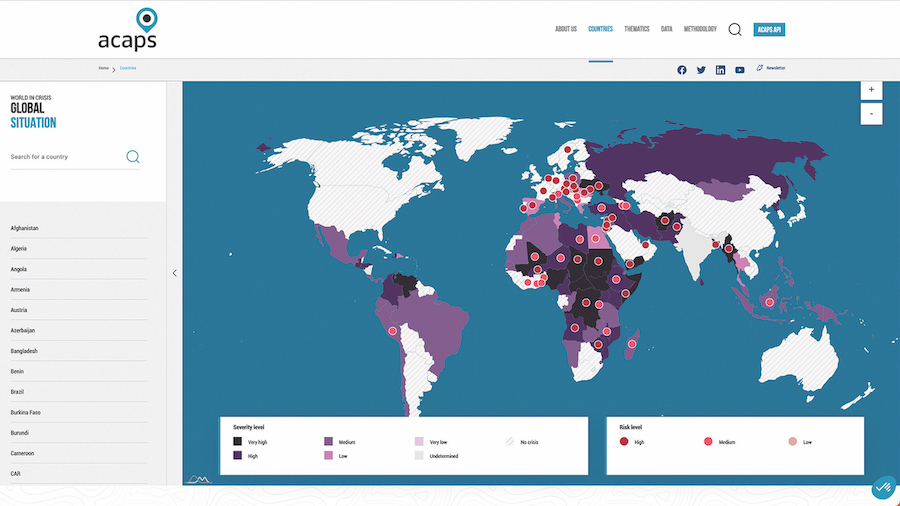
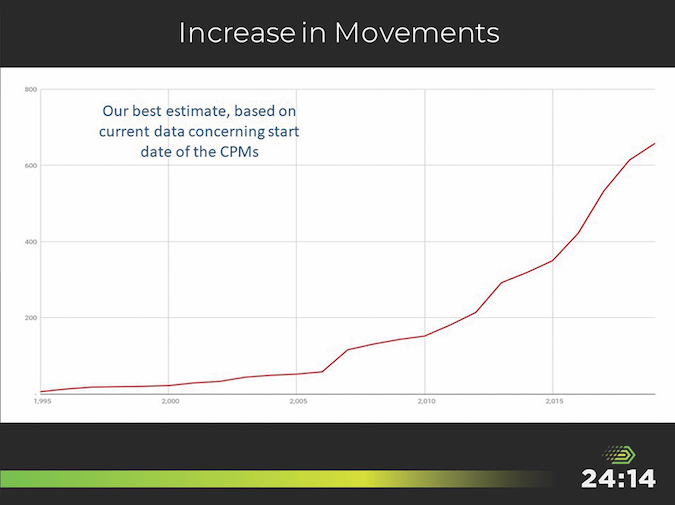
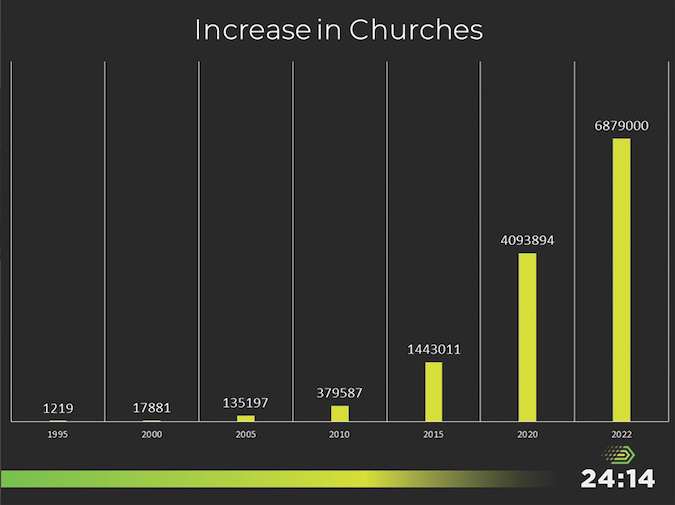
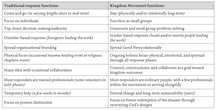


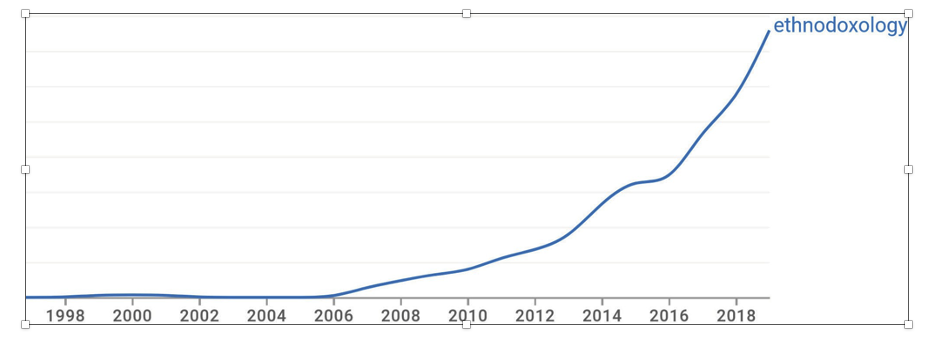
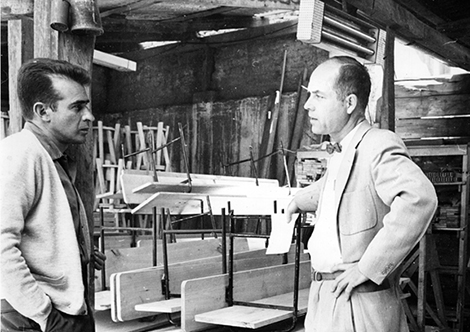
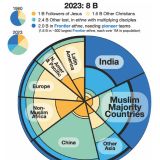

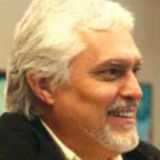


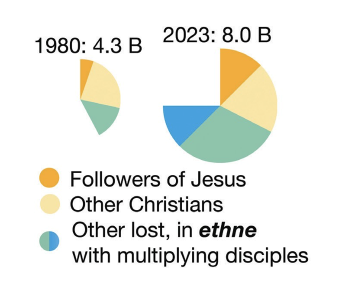
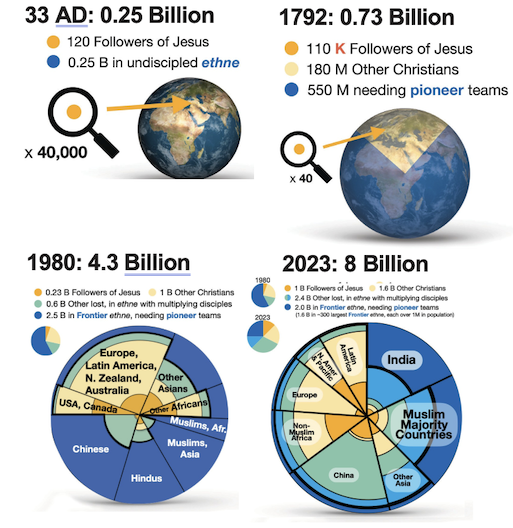

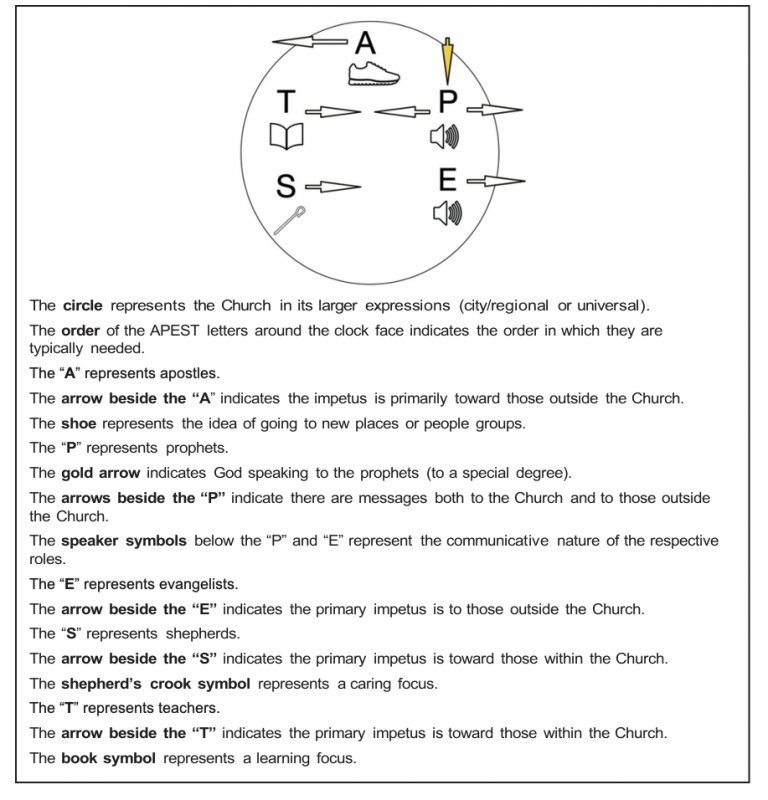



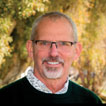
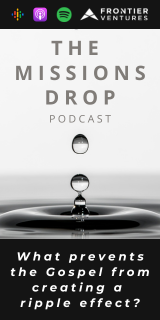
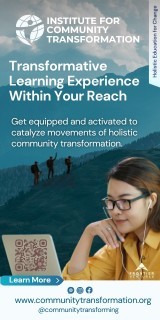

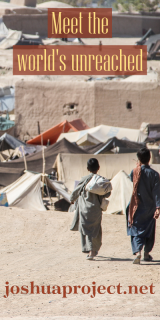
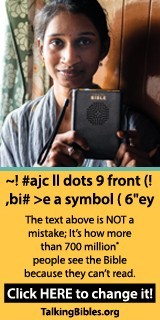
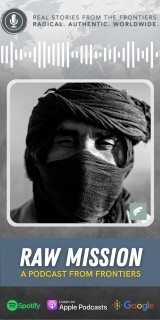
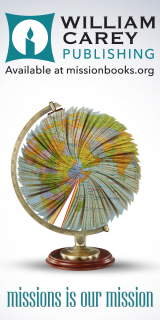
comments